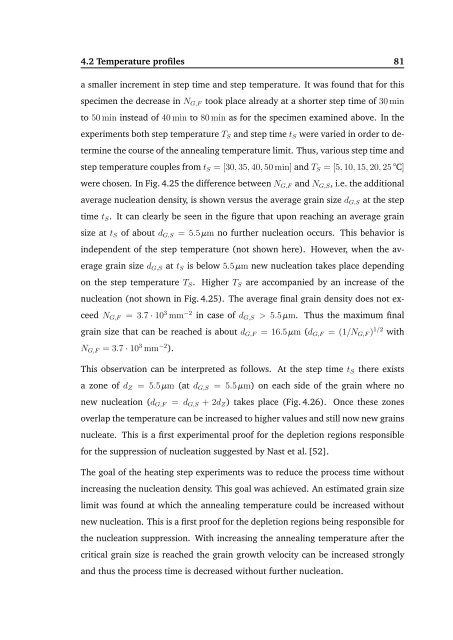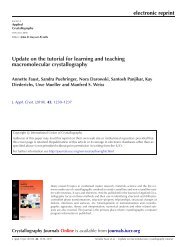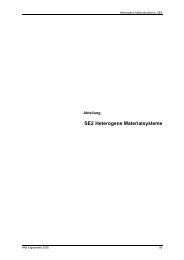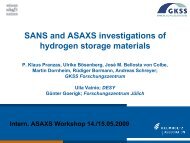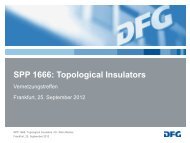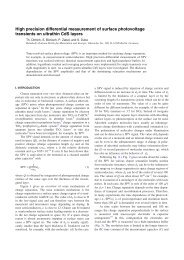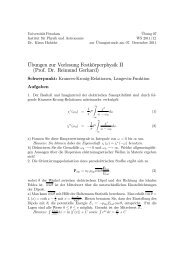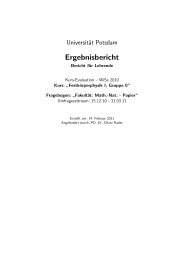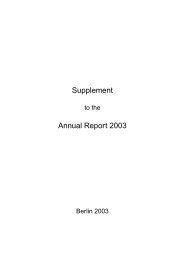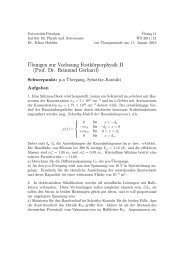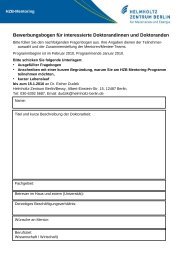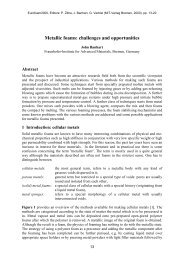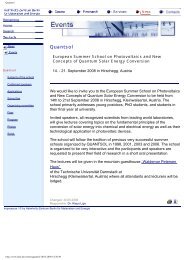(a) 100 µm - Helmholtz-Zentrum Berlin
(a) 100 µm - Helmholtz-Zentrum Berlin
(a) 100 µm - Helmholtz-Zentrum Berlin
You also want an ePaper? Increase the reach of your titles
YUMPU automatically turns print PDFs into web optimized ePapers that Google loves.
4.2 Temperature profiles 81<br />
a smaller increment in step time and step temperature. It was found that for this<br />
specimen the decrease in NG,F took place already at a shorter step time of 30 min<br />
to 50 min instead of 40 min to 80 min as for the specimen examined above. In the<br />
experiments both step temperature TS and step time tS were varied in order to de-<br />
termine the course of the annealing temperature limit. Thus, various step time and<br />
step temperature couples from tS = [30, 35, 40, 50 min] and TS = [5, 10, 15, 20, 25 °C]<br />
were chosen. In Fig. 4.25 the difference between NG,F and NG,S, i.e. the additional<br />
average nucleation density, is shown versus the average grain size dG,S at the step<br />
time tS. It can clearly be seen in the figure that upon reaching an average grain<br />
size at tS of about dG,S = 5.5 <strong>µm</strong> no further nucleation occurs. This behavior is<br />
independent of the step temperature (not shown here). However, when the av-<br />
erage grain size dG,S at tS is below 5.5 <strong>µm</strong> new nucleation takes place depending<br />
on the step temperature TS. Higher TS are accompanied by an increase of the<br />
nucleation (not shown in Fig. 4.25). The average final grain density does not ex-<br />
ceed NG,F = 3.7 · 10 3 mm −2 in case of dG,S > 5.5 <strong>µm</strong>. Thus the maximum final<br />
grain size that can be reached is about dG,F = 16.5 <strong>µm</strong> (dG,F = (1/NG,F ) 1/2 with<br />
NG,F = 3.7 · 10 3 mm −2 ).<br />
This observation can be interpreted as follows. At the step time tS there exists<br />
a zone of dZ = 5.5 <strong>µm</strong> (at dG,S = 5.5 <strong>µm</strong>) on each side of the grain where no<br />
new nucleation (dG,F = dG,S + 2dZ) takes place (Fig. 4.26). Once these zones<br />
overlap the temperature can be increased to higher values and still now new grains<br />
nucleate. This is a first experimental proof for the depletion regions responsible<br />
for the suppression of nucleation suggested by Nast et al. [52].<br />
The goal of the heating step experiments was to reduce the process time without<br />
increasing the nucleation density. This goal was achieved. An estimated grain size<br />
limit was found at which the annealing temperature could be increased without<br />
new nucleation. This is a first proof for the depletion regions being responsible for<br />
the nucleation suppression. With increasing the annealing temperature after the<br />
critical grain size is reached the grain growth velocity can be increased strongly<br />
and thus the process time is decreased without further nucleation.


